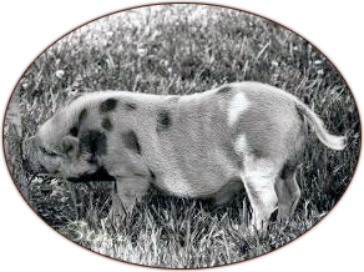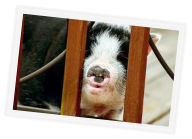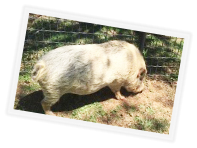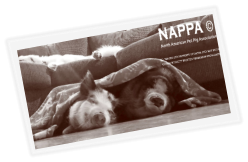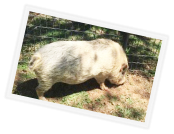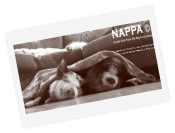BACK TO TOP
FOR MORE INFORMATION, E-MAIL: nappapignews@yahoo.com
2022-2025 Designed by: WimberlysWebWorks.com
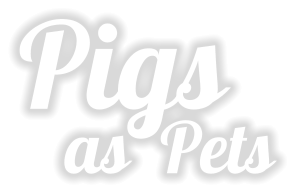
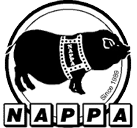

click photo to enlarge


Our community is dedicated to providing valuable
knowledge and insight to both current potbellied
pigs/miniature pig owners and those considering adopting
these charming animals. We understand the unique needs
and characteristics of potbellied pigs and miniature pigs, and
we are here to help you navigate the wonderful world of pet
pig ownership.
Whether you’re a current owner or just starting your journey, our forum
serves as a hub of expertise, where you can find answers to your questions,
share experiences, and learn from fellow pig owners. Our goal is to empower
you with the information you need to provide the best possible care for your
potbellied pig or miniature pig and create a happy, healthy home for them.
Here, you’ll discover a wide range of topics related to potbellied pigs or
miniature pigs, including diet, housing and environment, health and veterinary
care, behavior and training, and much more. We encourage open discussions,
where owners can exchange ideas, share tips, and offer support to one
another.
Our dedicated team of pig experts are committed to providing accurate,
up-to-date information and resources. We strive to create a welcoming and
inclusive environment, where everyone can feel comfortable asking questions
and engaging in meaningful conversations.
Whether you’re seeking guidance on pig behavior, seeking
recommendations for pig-friendly products, or simply looking for a place to
connect with fellow pig lovers, our forum is the perfect platform to expand
your knowledge and network within the pig community.
Join us today and embark on an educational journey that will deepen your
understanding of potbellied pigs/ miniature pigs and enhance your bond with
these amazing animals. Together, let’s create a community that promotes responsible pig ownership and
ensures the well-being of these delightful companions.
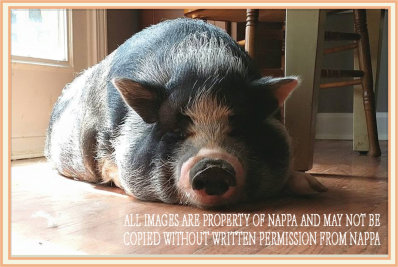

click photos to enlarge

What’s New?
CLICK HEREDispelling the Myth: Misconception about Potbellied Pigs and Miniature Pigs
and their Growth
Introduction:
Potbellied pigs have gained popularity as pets over the years, but there are several myths and misconceptions surrounding their growth and development. One particular myth involves breeding a young female potbellied pig with her own litter-mate, leading breeders to believe that the resulting piglets would remain small and not grow beyond a certain size. This false belief has caused problems, including the abandonment of potbellied pigs when they inevitably outgrow expectations. Let’s debunk this myth and shed light on the truth.Myth: Breeding a young female potbellied pig with her litter-mate will result in
permanently small piglets.
Explanation:
This myth stems from a misunderstanding of the genetics and biology of potbellied pigs. While it is true that potbellied pigs are generally smaller compared to traditional farm pigs, their growth is influenced by various factors, including genetics, diet, and overall care. Breeding a young female potbellied pig with her litter-mate does not guarantee that the piglets will remain small throughout their lives. In fact, their growth potential is determined by the genetic makeup inherited from both parents, regardless of their relationship within the litter.Fact: Potbellied pigs, like any other breed, will grow and reach their genetically
determined size.
Potbellied pigs, regardless of their lineage or breeding combinations, will continue to grow and reach their genetically determined size. While some individuals may remain smaller than others, they will still undergo normal growth and development. Factors such as nutrition, exercise, and healthcare play significant roles in their overall growth and well-being. It is crucial for prospective potbellied pig owners and breeders to understand that they should not rely on this myth as a guarantee of perpetual small size.Consequences of the Myth:
Believing in the myth of breeding a young female potbellied pig with her litter-mate can have severe consequences. When piglets inevitably grow larger than expected, individuals who were misled by this false notion may find themselves ill-prepared to care for a larger-sized pig. This misconception has led to the abandonment and relinquishment of potbellied pigs, contributing to the already existing problem of the pet pig rescue and overpopulation. Dispelling the myth that breeding a young female potbellied pig with her own litter-mate will result in permanently small piglets is essential for promoting responsible pet ownership. Understanding that potbellied pigs, like any other living beings, will grow and reach their genetically determined size is crucial in providing proper care, nutrition, and housing for these intelligent animals. By debunking this myth, we can help prevent the abandonment and mistreatment of potbellied pigs and promote their well-being in loving and responsible homes. Remember, accurate knowledge and responsible practices are key to ensuring the welfare of potbellied pigs and all animals in our care.NAPPA’s Hope for Hooves Project
2022/2024
A Guide for Foster Pig Parents
This guide is designed to provide foster parents with a comprehensive overview of the NAPPA’s Hope for Hooves Project. Along with information included in the foster pig packet, the guide is meant to be helpful resource for foster parents and should answer many of the questions that may arise before and during foster care. All information is subject to change. A second chance is sometimes all we need. The same goes for pet pigs hoping to find a new loving home. There are plenty of pigs longing for a new life and welcoming owners, so before you buy we should remember that many of the sweetest and loving pigs are found in local rescues and should be considered as your next foster pig. Our mission is to create the safety net these potbellied and miniature pigs need so desperately.Reason to Foster
Thank you for opening your heart and home to a homeless pig. Your generosity will provide young, old, injured and abused and under-socialized pigs a chance to grow or heal before finding their forever home. Our hope for placing homeless pigs will save many pigs other wised homeless. The Hope for Hooves Project plays an integral part in facilitating adoption of many pigs into forever homes. Fostering is a wonderful experience for you and your family. You can feel good knowing you have helped enrich a pig’s life. Even better, you’ve created space in the rescue to accommodate other homeless pigs. Foster pigs provide hope. Your act of kindness is repaid in rewards that are beyond words.How long are pigs in foster homes?
It depends on the pig and situation. The average stay in a foster home is about 1-2 years. However, pigs recovering from an injury and seniors may stay much longer.Can I adopt my foster pig?
YES! Foster parents have first choice to adopt their foster pig.If I have my own animals, can I foster?
Yes, but keep in mind that it’s always a risk to expose your established animal to a foster pig due to being prey and not adjusting to their surroundings.What supplies are needed to foster?
Foster parents provide space, basic training, exercise, and love for the pig. Hope for Hooves will provide food for the foster pig and give contact information on partnered veterinarians, vet access and list of veterinarian colleges. We proudly have a sponsor to give feed to your foster pig. Always provide plenty of clean fresh water!Do I have to crate-train my foster pig?
Yes, it is one of the most efficient ways to house train a foster pig. Some pigs need to be trained to walk into a crate. This is relatively easy to accomplish by putting a small amount of treats into crate. When the pig walks into the crate, then secure the door behind them. Crates should never be used as punishment.Stay calm, be patient and read about the 3-3-3 Rule
The 3 day, 3 week, 3 months Rule: In the first days, your foster pig will be overwhelmed with their new surroundings. Let them walk up to you as they may be scared and unsure of what is going on. After 3 weeks ,your foster pig will be settling in, feeling more comfortable, and realizing this will be their safe home awaiting for their forever home. They have figured out their environment and have established a routine that you have set. Behavior issues may start showing, this is your time to be a strong leader and calmly show them what is right from wrong. After 3 months, your foster pig is now completely comfortable in their home. You have built trust and true bond with your foster pig, which gives them a complete sense of security with you. The 3-3-3 Rule is a general guide. Every pig is unique and will adjust differently. Give your foster pig space and allow them to go at his own pace.How much time each day is needed to foster?
Commitment and responsibilities are requirement for fostering a pig. It is essential that foster parents understand that a pig may be stressed and even emotional post transport from the rescue to the foster home. Foster parents must be willing to be patent and commit to the pig because our goal is to keep them in a stable and consistent environment. Create a routine that you set from day one.Transporting your Foster Pig
The safest way to transport your pig is in a secure crate in the back of a SUV. The crate should be secured so that it doesn’t tip over.Harness Training
Harness training should not be attempted until your pig trusts you and is totally comfortable being touched all over. During your touching sessions, try taking measurements of your pig’s neck and girth with a cloth tape. This will be helpful when adjusting the harness (off the pig) before the initial fitting. Take your time and be patient. Rub the harness on the pig’s body. Let your pig sniff and root the harness. This is called desensitization.Training Tip
We suggest positive, rewards based training for pigs. Increasing your foster pig’s basic-training skills has many benefits. Not only will the future adopter appreciate these skills, but your foster pig will have better manners when visiting a vet and you will have a much happier foster experience. Some basic training cues that your foster pig should learn are: Sit, Come and Crate. These are very helpful in managing any pig. Your foster pig should be allowed to root in the soil and graze on the grass (not treated with chemicals or fertilizers). Pigs are susceptible to selenium deficiency. If pigs are allowed to graze and root in the soil they will get enough. Do not feed dog or cat food (it is too high in protein). Never feed salty snacks. Never feed any pork or pork products. Give plenty of fresh water, do not give in to begging.
We are proud to bring together our experts in the overall care and related issues of the pet pig. The
information shared will help to improve the health and wellness of our pigs. By working together, and
teaching new owners the importance of responsible pig parenting, we give homeless pet pigs a chance to
thrive in their forever homes.
PET PIG SUMMIT ARTICLES:
• BEHAVIOR ISSUES IN MINIATURE PIGS • NUTRITION OF POTBELLIED PIGS • FUN & SIMPLE WAYS TO TRAIN YOUR PET PIG • TIPS FOR SOLVING COMMON PET PIG PROBLEMS • GENERAL FEEDING GUIDELINES FOR POTBELLIED AND MINIATURE PET PIGS • MINIATURE PIG CARE SHEET • HISTORY OF THE POT-BELLIED PIG / KEITH CONNELL • 5 IMPORTANT FACTS TO TEACH KIDS ABOUT PETS • WAYS TO STRENGTHEN BONDS WITH A RESCUE PIG • 5 SUMMER SAFETY TIPS FOR PETS • 7 REASONS TO CONSIDER ADOPTING THE ADULT PET PIG • THINKING ABOUT A POTBELLIED PIG • SHOULD YOU GET A PIG AS A PET? • HELPFUL TIPS • DR. JOHN CARR & OTHER RESCUE ORGANIZATIONAL INFO & EDUCATIONAL VIDEOS PLEASE CLICK HERE TO GO TO THE PET PIG SUMMIT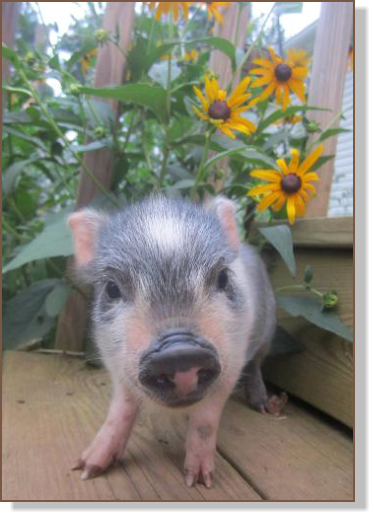
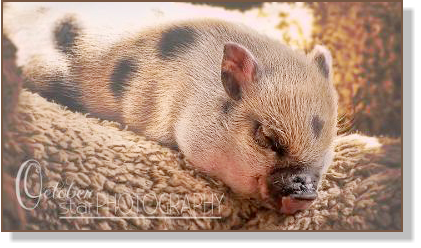
The Pet Pig Summit
Welcome to the Potbellied Pig
and Miniature Pig Education
and Information Forum
Welcome
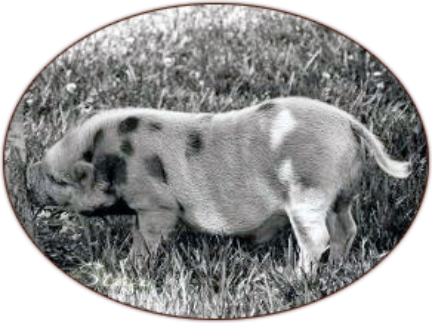

BACK TO TOP
FOR MORE INFORMATION,
E-MAIL: nappapignews@yahoo.com
2022-2025 Designed by: WimberlysWebWorks.com
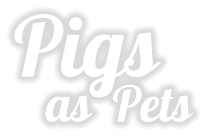



click photo to enlarge

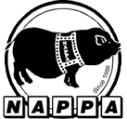
Our community
is dedicated to
providing valuable
knowledge and
insight to both
current potbellied
pigs/miniature pig
owners and those
considering adopting
these charming
animals. We
understand the unique
needs and
characteristics of
potbellied pigs and
miniature pigs, and we
are here to help you
navigate the wonderful
world of pet pig
ownership.
Whether you’re a
current owner or just
starting your journey,
our forum serves as a
hub of expertise,
where you can find
answers to your
questions, share
experiences, and learn
from fellow pig
owners. Our goal is to empower you with the
information you need to provide the best possible
care for your potbellied pig or miniature pig and
create a happy, healthy home for them.
Here, you’ll discover a wide range of topics
related to potbellied pigs or miniature pigs,
including diet, housing and environment, health
and veterinary care, behavior and training, and
much more. We encourage open discussions,
where owners can exchange ideas, share tips, and
offer support to one another.
Our dedicated team of pig experts are
committed to providing accurate, up-to-date
information and resources. We strive to create a
welcoming and inclusive environment, where
everyone can feel comfortable asking questions
and engaging in meaningful conversations.
Whether you’re seeking guidance on pig
behavior, seeking recommendations for pig-
friendly products, or simply looking for a place to
connect with fellow pig lovers, our forum is the
perfect platform to expand your knowledge and
network within the pig community.
Join us today and embark on an educational
journey that will deepen your understanding of
potbellied pigs/ miniature pigs and enhance your
bond with these amazing animals. Together, let’s
create a community that promotes responsible pig
ownership and ensures the well-being of these
delightful companions.
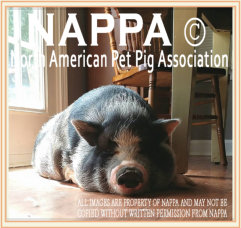
click photos to enlarge


What’s New?
CLICK HEREDispelling the Myth: Misconception
about Potbellied Pigs and Miniature
Pigs and their Growth
Introduction:
Potbellied pigs have gained popularity as pets over the years, but there are several myths and misconceptions surrounding their growth and development. One particular myth involves breeding a young female potbellied pig with her own litter-mate, leading breeders to believe that the resulting piglets would remain small and not grow beyond a certain size. This false belief has caused problems, including the abandonment of potbellied pigs when they inevitably outgrow expectations. Let’s debunk this myth and shed light on the truth.Myth: Breeding a young female
potbellied pig with her litter-mate
will result in permanently small
piglets.
Explanation:
This myth stems from a misunderstanding of the genetics and biology of potbellied pigs. While it is true that potbellied pigs are generally smaller compared to traditional farm pigs, their growth is influenced by various factors, including genetics, diet, and overall care. Breeding a young female potbellied pig with her litter-mate does not guarantee that the piglets will remain small throughout their lives. In fact, their growth potential is determined by the genetic makeup inherited from both parents, regardless of their relationship within the litter.Fact: Potbellied pigs, like any other
breed, will grow and reach their
genetically determined size.
Potbellied pigs, regardless of their lineage or breeding combinations, will continue to grow and reach their genetically determined size. While some individuals may remain smaller than others, they will still undergo normal growth and development. Factors such as nutrition, exercise, and healthcare play significant roles in their overall growth and well-being. It is crucial for prospective potbellied pig owners and breeders to understand that they should not rely on this myth as a guarantee of perpetual small size.Consequences of the Myth:
Believing in the myth of breeding a young female potbellied pig with her litter-mate can have severe consequences. When piglets inevitably grow larger than expected, individuals who were misled by this false notion may find themselves ill- prepared to care for a larger-sized pig. This misconception has led to the abandonment and relinquishment of potbellied pigs, contributing to the already existing problem of the pet pig rescue and overpopulation. Dispelling the myth that breeding a young female potbellied pig with her own litter-mate will result in permanently small piglets is essential for promoting responsible pet ownership. Understanding that potbellied pigs, like any other living beings, will grow and reach their genetically determined size is crucial in providing proper care, nutrition, and housing for these intelligent animals. By debunking this myth, we can help prevent the abandonment and mistreatment of potbellied pigs and promote their well-being in loving and responsible homes. Remember, accurate knowledge and responsible practices are key to ensuring the welfare of potbellied pigs and all animals in our care.NAPPA’s Hope for Hooves Project
2022/2024
A Guide for Foster Pig Parents
This guide is designed to provide foster parents with a comprehensive overview of the NAPPA’s Hope for Hooves Project. Along with information included in the foster pig packet, the guide is meant to be helpful resource for foster parents and should answer many of the questions that may arise before and during foster care. All information is subject to change. A second chance is sometimes all we need. The same goes for pet pigs hoping to find a new loving home. There are plenty of pigs longing for a new life and welcoming owners, so before you buy we should remember that many of the sweetest and loving pigs are found in local rescues and should be considered as your next foster pig. Our mission is to create the safety net these potbellied and miniature pigs need so desperately.Reason to Foster
Thank you for opening your heart and home to a homeless pig. Your generosity will provide young, old, injured and abused and under- socialized pigs a chance to grow or heal before finding their forever home. Our hope for placing homeless pigs will save many pigs other wised homeless. The Hope for Hooves Project plays an integral part in facilitating adoption of many pigs into forever homes. Fostering is a wonderful experience for you and your family. You can feel good knowing you have helped enrich a pig’s life. Even better, you’ve created space in the rescue to accommodate other homeless pigs. Foster pigs provide hope. Your act of kindness is repaid in rewards that are beyond words.How long are pigs in foster homes?
It depends on the pig and situation. The average stay in a foster home is about 1-2 years. However, pigs recovering from an injury and seniors may stay much longer.Can I adopt my foster pig?
YES! Foster parents have first choice to adopt their foster pig.If I have my own animals, can I foster?
Yes, but keep in mind that it’s always a risk to expose your established animal to a foster pig due to being prey and not adjusting to their surroundings.What supplies are needed to foster?
Foster parents provide space, basic training, exercise, and love for the pig. Hope for Hooves will provide food for the foster pig and give contact information on partnered veterinarians, vet access and list of veterinarian colleges. We proudly have a sponsor to give feed to your foster pig. Always provide plenty of clean fresh water!Do I have to crate-train my foster pig?
Yes, it is one of the most efficient ways to house train a foster pig. Some pigs need to be trained to walk into a crate. This is relatively easy to accomplish by putting a small amount of treats into crate. When the pig walks into the crate, then secure the door behind them. Crates should never be used as punishment.Stay calm, be patient and read about the 3-
3-3 Rule
The 3 day, 3 week, 3 months Rule: In the first days, your foster pig will be overwhelmed with their new surroundings. Let them walk up to you as they may be scared and unsure of what is going on. After 3 weeks ,your foster pig will be settling in, feeling more comfortable, and realizing this will be their safe home awaiting for their forever home. They have figured out their environment and have established a routine that you have set. Behavior issues may start showing, this is your time to be a strong leader and calmly show them what is right from wrong. After 3 months, your foster pig is now completely comfortable in their home. You have built trust and true bond with your foster pig, which gives them a complete sense of security with you. The 3-3-3 Rule is a general guide. Every pig is unique and will adjust differently. Give your foster pig space and allow them to go at his own pace.How much time each day is needed to
foster?
Commitment and responsibilities are requirement for fostering a pig. It is essential that foster parents understand that a pig may be stressed and even emotional post transport from the rescue to the foster home. Foster parents must be willing to be patent and commit to the pig because our goal is to keep them in a stable and consistent environment. Create a routine that you set from day one.Transporting your Foster Pig
The safest way to transport your pig is in a secure crate in the back of a SUV. The crate should be secured so that it doesn’t tip over.Harness Training
Harness training should not be attempted until your pig trusts you and is totally comfortable being touched all over. During your touching sessions, try taking measurements of your pig’s neck and girth with a cloth tape. This will be helpful when adjusting the harness (off the pig) before the initial fitting. Take your time and be patient. Rub the harness on the pig’s body. Let your pig sniff and root the harness. This is called desensitization.Training Tip
We suggest positive, rewards based training for pigs. Increasing your foster pig’s basic-training skills has many benefits. Not only will the future adopter appreciate these skills, but your foster pig will have better manners when visiting a vet and you will have a much happier foster experience. Some basic training cues that your foster pig should learn are: Sit, Come and Crate. These are very helpful in managing any pig. Your foster pig should be allowed to root in the soil and graze on the grass (not treated with chemicals or fertilizers). Pigs are susceptible to selenium deficiency. If pigs are allowed to graze and root in the soil they will get enough. Do not feed dog or cat food (it is too high in protein). Never feed salty snacks. Never feed any pork or pork products. Give plenty of fresh water, do not give in to begging.
We are proud to bring together our experts in the
overall care and related issues of the pet pig. The
information shared will help to improve the health
and wellness of our pigs. By working together,
and teaching new owners the importance of
responsible pig parenting, we give homeless pet
pigs a chance to thrive in their forever homes.
PET PIG SUMMIT ARTICLES:
• BEHAVIOR ISSUES IN MINIATURE PIGS • NUTRITION OF POTBELLIED PIGS • FUN & SIMPLE WAYS TO TRAIN YOUR PET PIG • TIPS FOR SOLVING COMMON PET PIG PROBLEMS • GENERAL FEEDING GUIDELINES FOR POTBELLIED AND MINIATURE PET PIGS • MINIATURE PIG CARE SHEET • HISTORY OF THE POT-BELLIED PIG / KEITH CONNELL • 5 IMPORTANT FACTS TO TEACH KIDS ABOUT PETS • WAYS TO STRENGTHEN BONDS WITH A RESCUE PIG • 5 SUMMER SAFETY TIPS FOR PETS • 7 REASONS TO CONSIDER ADOPTING THE ADULT PET PIG • THINKING ABOUT A POTBELLIED PIG • SHOULD YOU GET A PIG AS A PET? • HELPFUL TIPS • DR. JOHN CARR & OTHER RESCUE ORGANIZATIONAL INFO & EDUCATIONAL VIDEOS PLEASE CLICK HERE TO GO TO THE PET PIG SUMMIT
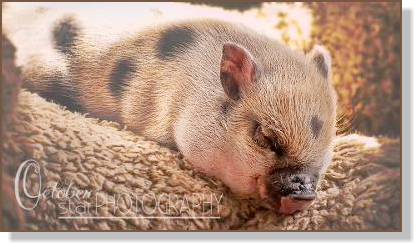
The Pet Pig Summit
Welcome to the Potbellied
Pig and Miniature Pig
Education and
Information Forum

Welcome
